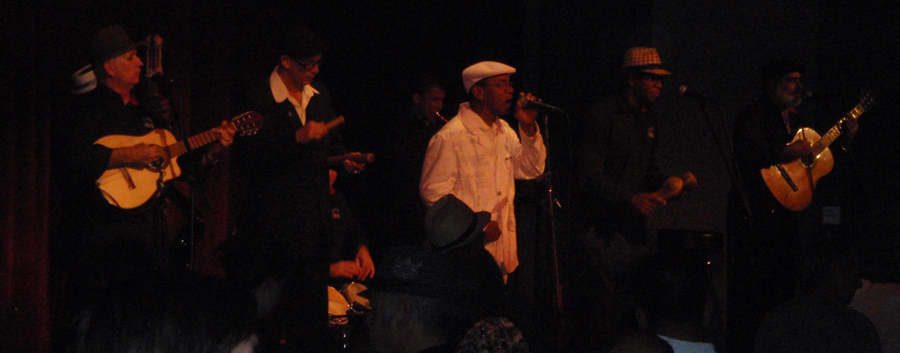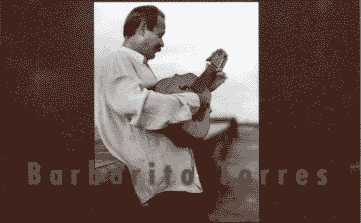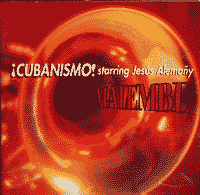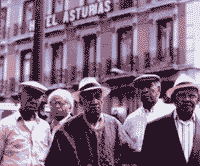Septeto Santiaguero at Freight & Salvage, Berkeley, Saturday 12 August

I may not get to Cuba this year but so far 11 of their greatest musicians have come to serenade me. Tonight it was El Septeto Santiaguero who tore up the Freight & Salvage in Berkeley on the last stop of their North American tour. I was by no means the oldest person there but the blue rinse set was not taking it sitting down and danced energetically; one plump couple in pink held sway in front of the bandstand, he in a straw boater waving his hankie, she in a big hair bow. The duchess thought they looked like a Botero couple. From the opening notes you could tell that the tour had sharpened the octet's chops to a fine edge. In fact as every song ended the audience cheered and the tres player (who was outstanding) wound it up with a couple of chords and the percussion locked back into the groove for a second outtro. They played non-stop for two hours. The trumpeter started playing solo and then they launched into "Chan Chan" which everyone knows and greeted with cheers. But his second trumpet solo was a quote from the largo from "Aranjuez" by Rodrigo. Very classy. They covered a wide repertoire from Compay Segundo to Juan Formell. It was not all familiar and it certainly was not the tired repertoire that was driven into the ground by the Buena Vistans who dwindled as their tours ground on. This was one of the most energetic Cuban acoustic groups I've seen, right up there with Sierra Maestra & Cuarteto Patria. At one point, in their excitement to tell us what a great time they were having, they even tried English! The bassist, conguero and bongocero did not solo, although every now and then the guitars dropped out so you could feel the backbone of the rhythm as the two singers passed the guiro, painted in the Cuban flag, back and forth. I ran into ace percussionist John Santos, What do you think? I asked. Criminal! he replied. And he added, at least you don't have to go to Santiago! Indeed not. And now I can say I sang coro with them (as did everyone else in the packed house). As Ignacio Piñeiro was fond of saying "El son es lo mas sublime!"
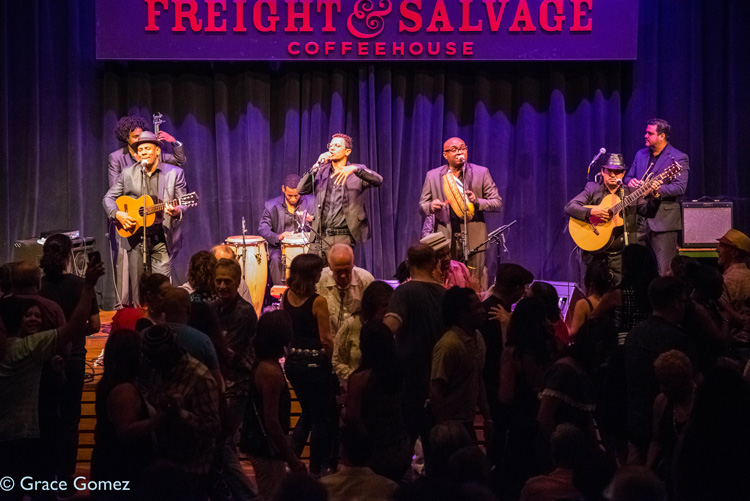
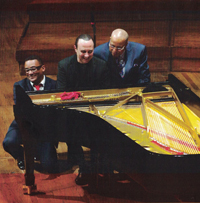
MICHEL CAMILO, GONZALO RUBALCABA, CHUCHO VALDES
IN CONCERT: Tribute to Ernesto Lecuona, SF JAZZ 25 May 2017
SF Jazz staged a major event, bringing three masters of Cuban piano to town and sitting them at two Steinway pianos (which led to some amusing musical chairs). Their fierce, classically honed chops were on display as they tore through the repertoire of the great Cuban composer Ernesto Lecuona (1895-1963), quoting Rachmaninov or Rimsky-Korsakov with abandon. How do they learn to play like that? someone asked during the intermission. They start when they are 5 and if they play a wrong note they get rapped on the knuckles, I ventured. Michel Camilo, seemingly the academic of the group, led off the evening. He explained, in English, that Lecuona was a huge figure in his day, playing at Aeolian Hall in New York in 1916, a decade before Gershwin, in fact the two not only became friends but Lecuona's influence on "Rhapsody in Blue" is well demonstrated. Camilo is the professorial type and one would love to take classes from him. His technical skills were on display as he performed "San Francisco el grande," followed by more familiar zarzuelas, danzons and comparsas, including the big hit "Siboney." Lecuona's father was an immigrant from Tenerife and married a Cuban woman which explains the Andalusian and classical Spanish strains in his music (the composer also lived in Spain for a number of years). But what puts the meat on the bones is the Afro-Cuban rhythms which emerge in the left hand figures. This requires a left/right brain separation from performers who need to keep a driving rhythm going on the left while producing vastly intricate runs on the right hand side. Try this at home, by all means, and good luck. The filmic side of the composer was showcased with "Siempre en mi corazon (Always in my heart)," which was nominated for an Oscar in 1942 (but lost out to "White Christmas"). (Incidentally, IMDB shows that his music was used regularly in American films from 1931 on, but mostly uncredited.) After a spirited duet with Rubalcaba, Camilo left the stage to the shorter man. I only bring up his size because he explained that it really requires big hands to manage some of the musical figures. His hands were a blur as he drove rhythmically into the complexities of "Andalucia" and "Rapsodia Negra." He in turn brought out the gigantic Chucho Valdés (who must be 6'7 or 8") and the two dueted and improvised on another excerpt from Lecuona's Afro-Cuban suite. After an intermission Valdés returned solo, spoke unapologetically in Spanish, and showed the packed house why he is one of the greats, alongside his father Bebo and indeed Gonzalo's dad, Guillermo Rubalcaba. While there was a fair amount of showboating (beating fast trills on one hand then moving his other hand across the keyboard to replace the first, seamlessly, while carrying on with cadenzas), there was lyricism and humor in his playing. Chucho got a few plums, such as "Mario la O," to deliver, which he did with gusto and not a small dose of romantic lyricism. He received five standing ovations. The other two musketeers returned and did a lot of shtick running from one keyboard to the other and soloing or pairing up, switching chairs (since Chucho needed a smaller stool to get his legs under the keyboard) and finally all three ended up playing on 88 ivories, reaching around and over one another, while never losing the beat. Gonzalo started some rubato fills that sounded like horn lines; Camilo decided to showboat too and showed his lightning fast action in a triumphant flourish, but the other two wouldn't give in so easily so the evening ended with one after another grandstanding while the others kept the beat going, Rubalcaba with machine-like intensity, and Chucho adding melodies on top of driving bass runs.
